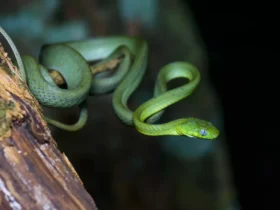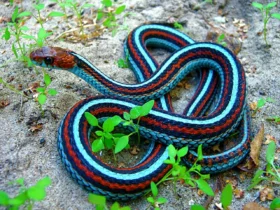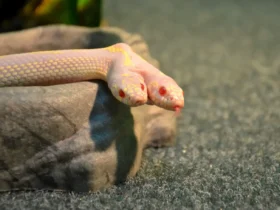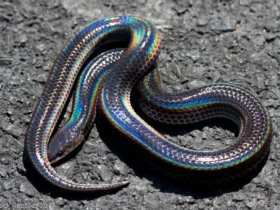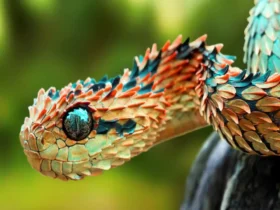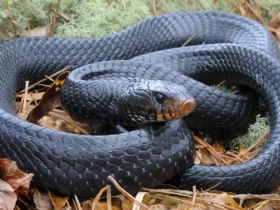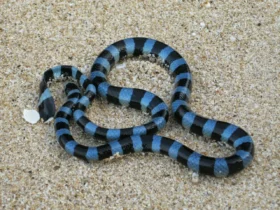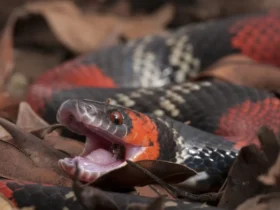Bibron’s coral snake (Calliophis bibroni) is a fascinating species of venomous snake that belongs to the family Elapidae. Known for its vibrant coloration and elusive nature, this serpent captures the imagination of both herpetologists and snake enthusiasts alike. In this article, we will explore the remarkable characteristics and intriguing behavior of Bibron’s coral snake, shedding light on its captivating presence in the animal kingdom.
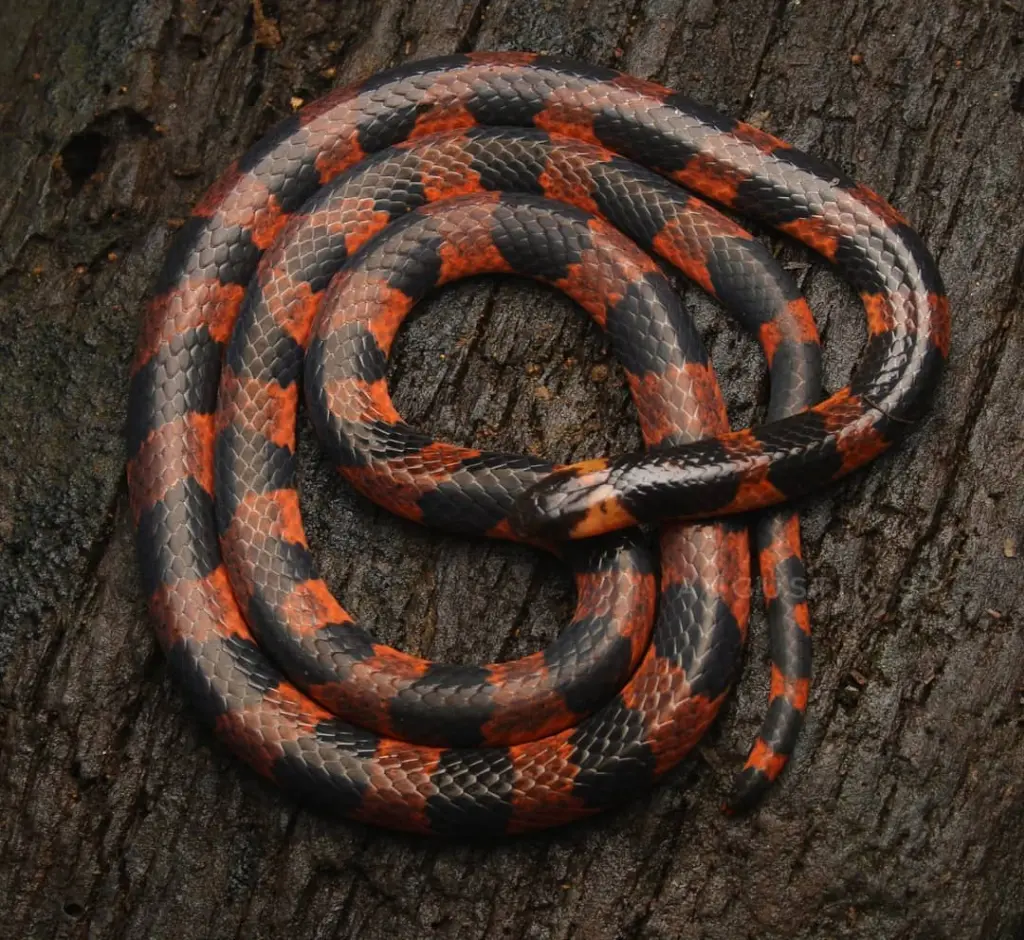

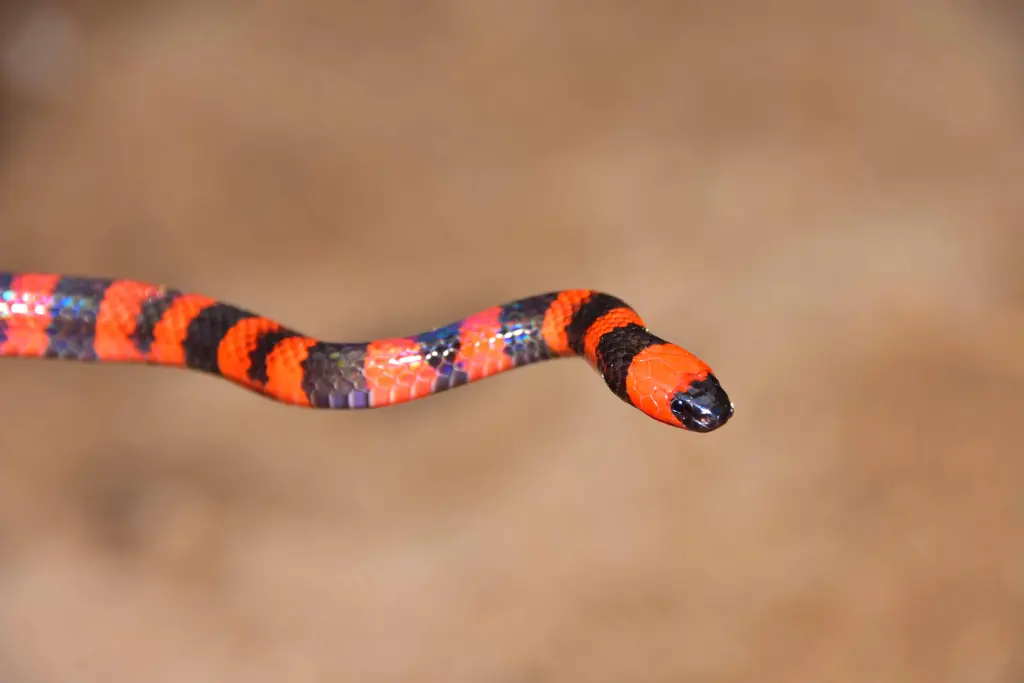
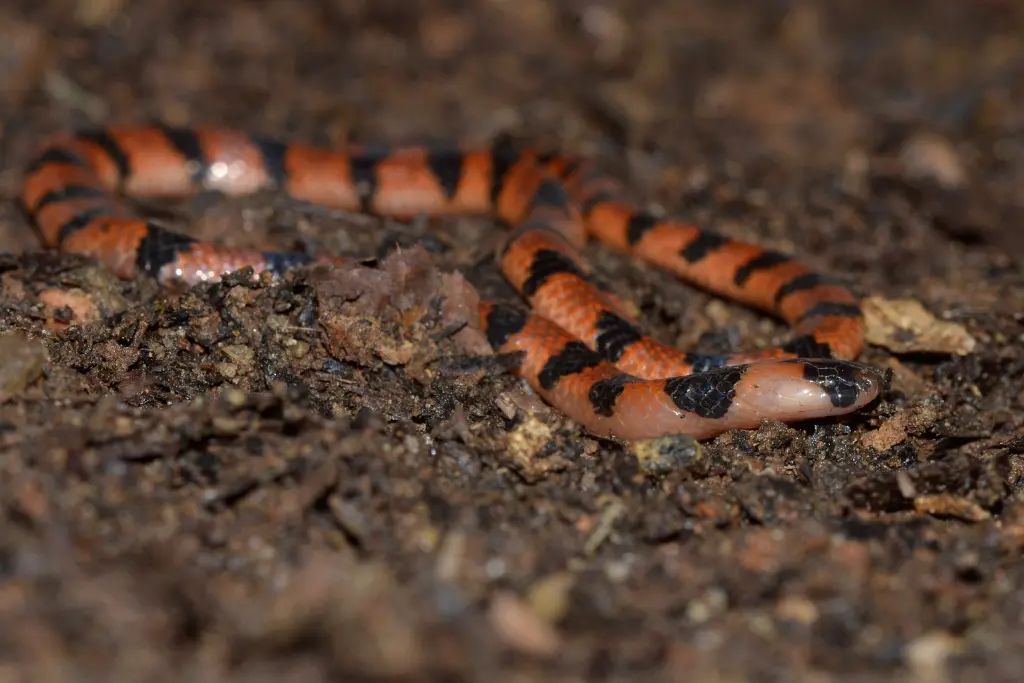

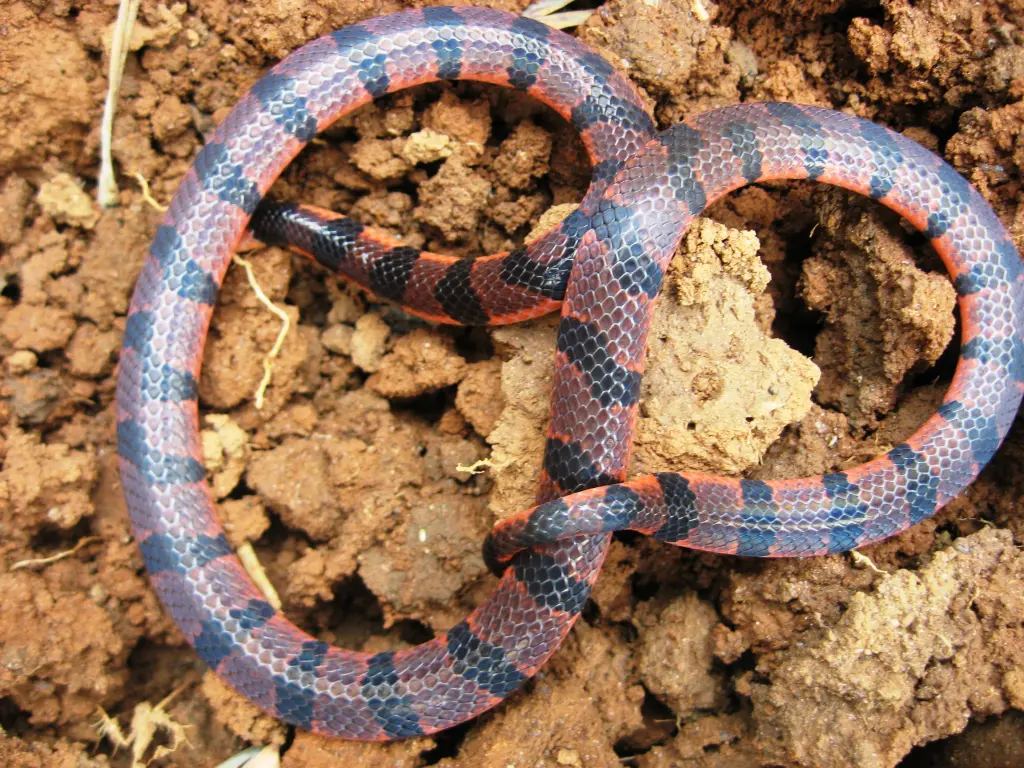
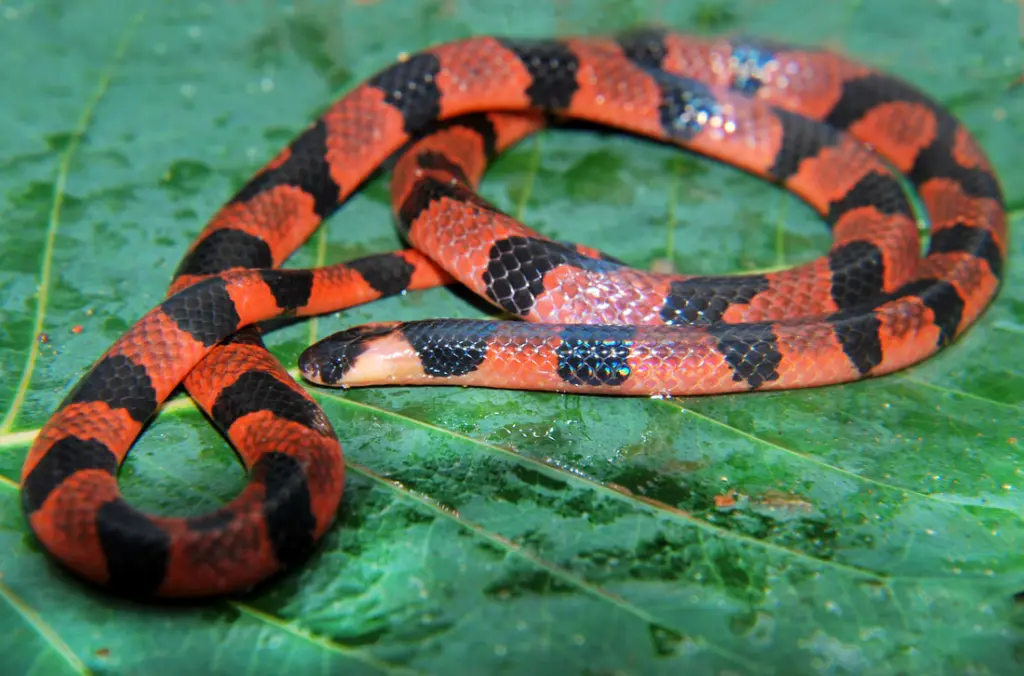
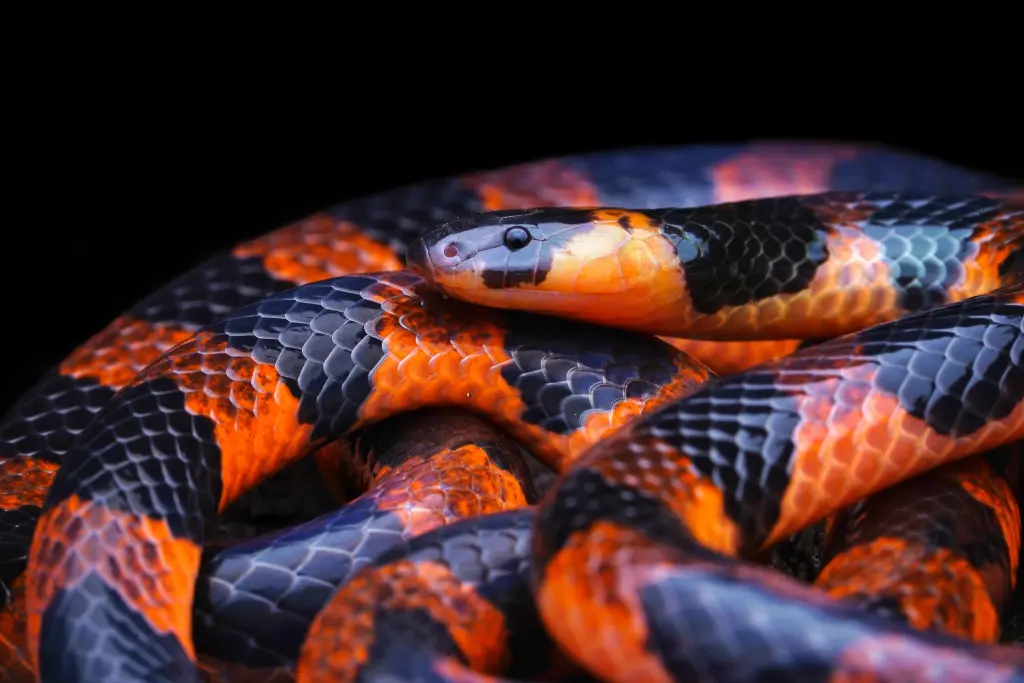
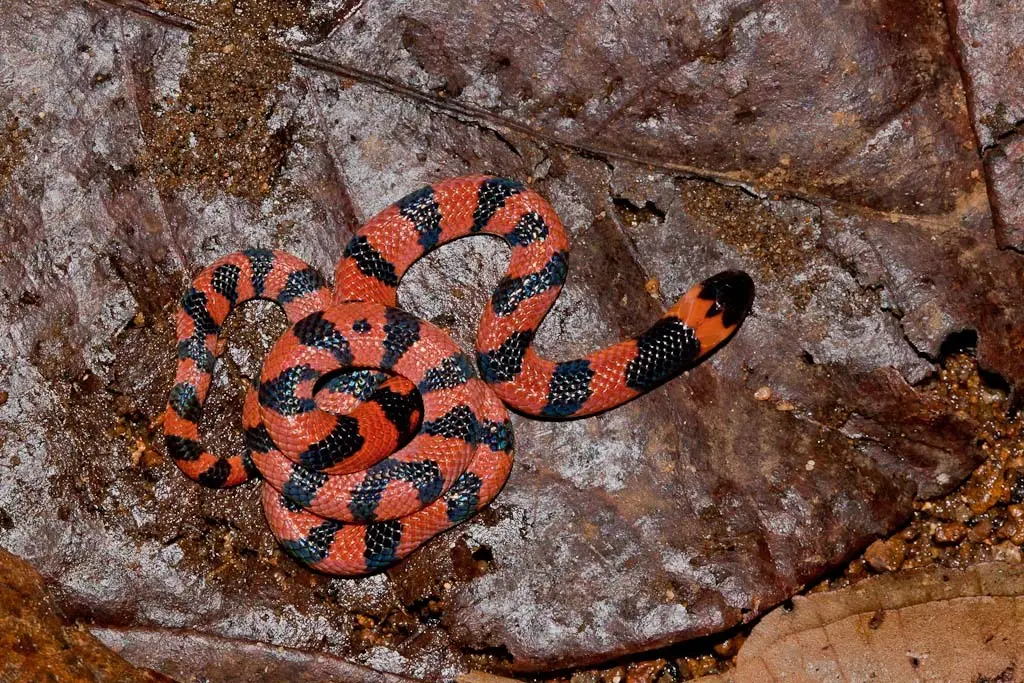
Appearance and Coloration
Bibron’s coral snake is renowned for its stunning and distinctive appearance. It showcases a slender body with an average length ranging from 60 to 90 centimeters. The snake’s head is relatively small, featuring a slightly flattened appearance. Its eyes possess a round shape with vertically elongated pupils, which are adapted to low light conditions.
One of the most striking features of Bibron’s coral snake is its mesmerizing coloration. Its body is adorned with a beautiful pattern of bands, typically consisting of vibrant red, black, and yellow rings. The vividness of these colors acts as a visual warning, indicating its venomous nature to potential predators. However, it is important to note that while the phrase “red touches black, venom lack; red touches yellow, kills a fellow” is often used to identify venomous coral snakes, it does not apply universally and should not be relied upon for accurate identification.
Habitat and Distribution
Bibron’s coral snake is predominantly found in Southeast Asia, specifically in countries such as Malaysia, Indonesia, Thailand, and Vietnam. It inhabits various types of environments, including rainforests, grasslands, and even agricultural areas. The snake has adapted to both terrestrial and arboreal lifestyles, allowing it to navigate through the diverse habitats it occupies.
Behavior and Diet
This elusive serpent is primarily nocturnal, displaying heightened activity during the nighttime hours. Bibron’s coral snake is a shy creature, often avoiding confrontation with larger animals. It moves with elegance and grace, relying on its keen senses to detect prey and potential threats.
In terms of diet, Bibron’s coral snake primarily feeds on other small reptiles, including lizards and occasionally other snakes. It employs its potent venom to immobilize and subdue its prey before swallowing it whole. Despite its venomous nature, this species poses little threat to humans due to its docile behavior and the limited opportunity for human encounters in its natural habitat.
Reproduction and Lifecycle
Like many other snake species, Bibron’s coral snake follows an oviparous reproductive strategy, meaning it lays eggs. After a successful mating, the female snake lays a clutch of eggs, typically ranging from two to six in number. These eggs are carefully guarded until they hatch, usually after an incubation period of several weeks. The hatchlings emerge as miniature replicas of the adults, possessing the same vibrant coloration and venomous potential.
Final Thought
Bibron’s coral snake, with its striking appearance and enigmatic behavior, remains a captivating inhabitant of Southeast Asian ecosystems. Its beautiful coloration serves as both a visual spectacle and a warning sign, highlighting its venomous nature to potential predators. While this snake may be venomous, it prefers to keep a low profile and avoid human interactions. As we continue to explore the wonders of the natural world, Bibron’s coral snake stands as a testament to the remarkable diversity and complexity of life found on our planet.

